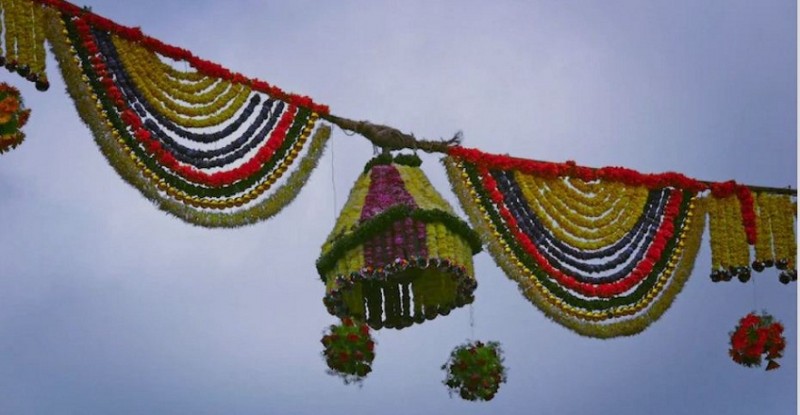
Dahi Handi, a dynamic and joyous event, is celebrated with great enthusiasm across the cities of Maharashtra and Goa. This unique festival, rooted in the life and legends of Lord Krishna, takes place on the day following Krishna Janmashtami, also known as Gokulashtami. The term "Dahi" translates to curd, and "Handi" refers to the earthen pot traditionally used to store milk products. This year, it will be observed on Tuesday, August 27, with Janmashtami taking place the day before, on Monday, August 26.The celebration is also fondly called "Gopalakala" in Maharashtra, highlighting its deep cultural significance.
Dahi Handi commemorates the mischievous yet divine childhood of Lord Krishna. According to Hindu mythology, young Krishna was famously fond of curd and butter. As he grew, his love for these milk products intensified, leading him to become notorious for sneaking into neighbors' homes to steal them. In an effort to protect their precious dairy goods, the women of the village began hanging earthen pots filled with curd high from the ceilings, out of the reach of Krishna and his friends.
However, Krishna, ever resourceful and determined, devised a clever plan. He and his friends would form a human pyramid, using their collective strength and teamwork to reach the pots and break them, enjoying the curd within. This playful act of defiance and teamwork has since become an enduring part of Indian folklore and is reenacted every year during Janmashtami.
In today's Dahi Handi celebrations, the essence of Krishna's playful spirit is kept alive through vibrant and energetic competitions. Large earthen pots filled with curd, butter, and sometimes even cash prizes are suspended high above the ground, often several stories up, in open spaces or at street crossings. Teams of young men, known as "Govindas," attempt to form human pyramids to reach and break the Handi, symbolizing Krishna's childhood escapades.
The challenge is made even more exciting by the involvement of women, who represent the female cowherds from Krishna's tale. They throw water or slippery liquids at the pyramids, attempting to disrupt the formation and prevent the Govindas from reaching the Handi. This playful rivalry adds to the festive atmosphere, drawing large crowds of spectators who cheer on their favorite teams.
In recent years, Dahi Handi has evolved into a competitive sport, particularly in cities like Mumbai. Hundreds of teams from across the region participate, each vying for the prestigious title of Dahi Handi champions. The event has gained significant popularity, attracting sponsorships, media coverage, and even celebrity endorsements.
The prize money for winning teams has reached impressive heights, with some events offering up to one crore (10 million Indian Rupees) as the top reward. This transformation of a traditional festival into a grand competitive spectacle reflects the evolving nature of cultural celebrations in India, where ancient traditions are continually reinvented to resonate with contemporary audiences.
Whether you are a participant or a spectator, Dahi Handi offers an unforgettable experience that encapsulates the vibrant energy and rich cultural tapestry of Maharashtra and Goa. As the chants of "Govinda Ala Re!" echo through the streets, the festival serves as a reminder of the enduring power of tradition, community, and the playful spirit of Krishna.